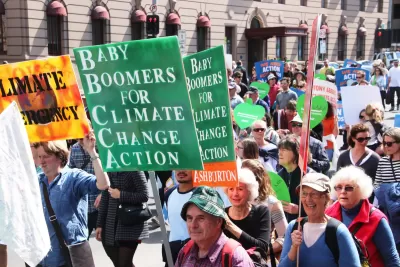The first baby Boomers turned 65 in 2011, and now the population of the United States has a growing number of residents over the age of 65. The country also has fewer people under the age of 14.

"The U.S. Census Bureau today released estimates showing the nation’s 65-and-older population has grown rapidly since 2010, driven by the aging of Baby Boomers born between 1946 and 1964," according to a press release from the U.S. Census Bureau.
"The 65-and-older population grew by over a third (34.2% or 13,787,044) during the past decade, and by 3.2% (1,688,924) from 2018 to 2019."
Also writing for the Census Bureau, Luke Rogers and Kristie Wilder follow up on the data with more insight about the implications of the aging of the U.S. population. Related to the increase in older Americans comes a decrease in Americans under the age of 14. "Over the last decade, the growth of the non-working-age (dependent) population – those aged 0 to 14 and 65 and older – has outpaced the growth of the working-age population," according to Rogers and Wilder.
Those statistics, when combined, mean a higher dependency ratio—more people at dependent ages than the number of people at working ages.
FULL STORY: 65 and Older Population Grows Rapidly as Baby Boomers Age

Alabama: Trump Terminates Settlements for Black Communities Harmed By Raw Sewage
Trump deemed the landmark civil rights agreement “illegal DEI and environmental justice policy.”

Planetizen Federal Action Tracker
A weekly monitor of how Trump’s orders and actions are impacting planners and planning in America.

The 120 Year Old Tiny Home Villages That Sheltered San Francisco’s Earthquake Refugees
More than a century ago, San Francisco mobilized to house thousands of residents displaced by the 1906 earthquake. Could their strategy offer a model for the present?

In Both Crashes and Crime, Public Transportation is Far Safer than Driving
Contrary to popular assumptions, public transportation has far lower crash and crime rates than automobile travel. For safer communities, improve and encourage transit travel.

Report: Zoning Reforms Should Complement Nashville’s Ambitious Transit Plan
Without reform, restrictive zoning codes will limit the impact of the city’s planned transit expansion and could exclude some of the residents who depend on transit the most.

Judge Orders Release of Frozen IRA, IIJA Funding
The decision is a victory for environmental groups who charged that freezing funds for critical infrastructure and disaster response programs caused “real and irreparable harm” to communities.
Urban Design for Planners 1: Software Tools
This six-course series explores essential urban design concepts using open source software and equips planners with the tools they need to participate fully in the urban design process.
Planning for Universal Design
Learn the tools for implementing Universal Design in planning regulations.
Clanton & Associates, Inc.
Jessamine County Fiscal Court
Institute for Housing and Urban Development Studies (IHS)
City of Grandview
Harvard GSD Executive Education
Toledo-Lucas County Plan Commissions
Salt Lake City
NYU Wagner Graduate School of Public Service





























